From the beginning, at Lab9, agility has been our mantra: moving fast, adapting, and prioritizing what matters to deliver real value to our clients. But… how do we maintain that agility while working 100% remotely?
The short answer: OKR (Objectives and Key Results). Now, let’s get into the interesting part—how we use them to enhance our agility and ensure our goals don’t remain just intentions but turn into tangible results.
What are OKRs and why are they ideal for remote teams?
OKRs are a simple yet powerful framework. The idea is to set:
- An objective: A clear and motivating goal we want to achieve.
- Key results: Measurable metrics that indicate whether we are achieving the objective.
Why do they fit so well in a remote environment? Because they bring clarity and alignment. When your entire team isn’t in the same office, having a framework that clearly communicates priorities helps keep everyone on the same page.
Our approach: OKRs + Agility = The Lab9 formula
At Lab9, we don’t just adopt OKRs; we customize them to align with our agile culture. Since our CEO, Alejandro Jatib, is a certified Sprint Master (yes, we love to brag about it), we know how to combine the best of OKRs with agile practices to maximize results.
1. We set quarterly objectives but review them weekly.
Although OKRs are typically worked on quarterly, we review them every week. Why? Because in a remote and dynamic environment, priorities can change quickly.
In our weekly meetings (check-ins), we make sure to:
- Ensure everyone knows the key objectives.
- Review progress and adjust if necessary.
- Celebrate small wins (a Slack full of emojis is always motivating).
2. Objectives connected to clients and the team
In a remote world, disconnection can become an issue. That’s why our OKRs are always designed so that each team member sees how their work impacts both the client’s goals and Lab9 as a company.
For example:
- Objective: Improve the customer experience in our Product X.
- Key results: Reduce loading time by 20% and increase user satisfaction rate to over 90%.
This way, every developer, designer, or tester knows exactly how their tasks contribute to the bigger picture.
3. Keeping everything visible and transparent.
We use tools like Notion or Asana to document OKRs and track progress. This not only promotes transparency but also allows anyone on the team to access and understand what we’re working on.
The phrase "What are you working on?" doesn’t exist at Lab9. With a quick glance at our tools, everything is crystal clear.
What challenges did we face (and how did we overcome them)?
Not everything was smooth from day one. Implementing OKRs in a remote team has its challenges:
- Initial dispersion: In a remote setting, urgent tasks can easily push important ones aside. We learned to prioritize OKRs in our daily stand-ups and retrospectives to stay focused.
- Measuring the intangible: Some key results are hard to measure, such as the quality of collaboration. In these cases, we use internal surveys and feedback tools to get a clearer picture.
- Avoiding "process overload": Being agile means not drowning in structures. That’s why our OKRs are simple and direct—no unnecessary bureaucracy.
The impact on our agility.
What’s the result of using OKRs? A more connected, efficient, and focused remote team. Thanks to this framework:
- We reduced project delivery times.
- We improved the quality of our software and design solutions.
- We fostered autonomy within the team—each member knows what to do without the need for micromanagement.
Additionally, OKRs helped us align our agile culture with our mission: to be a remote team that doesn’t just work but creates real impact for our clients.
Tips for implementing OKRs in your remote company.
If you’re thinking about adopting OKRs, here are some recommendations:
- Start simple: Don’t try to tackle everything at once. A few clear objectives are more effective than an endless list.
- Involve the team: Let every member contribute to creating the OKRs. This fosters commitment and a sense of ownership.
- Iterate constantly: Like any agile methodology, don’t stick to one formula. Adapt OKRs to your context and needs.
- Celebrate progress: Small wins add up. Recognizing them keeps the team motivated.
At Lab9, OKRs are more than just a tool—they’re part of our culture. They allow us to move fast, stay aligned, and deliver innovative solutions that create value.
If you want to learn more about implementing OKRs or improving agility in your company, we’re more than ready to help with innovation consulting.
Want to take your remote team to the next level?
Contact us! 🚀
